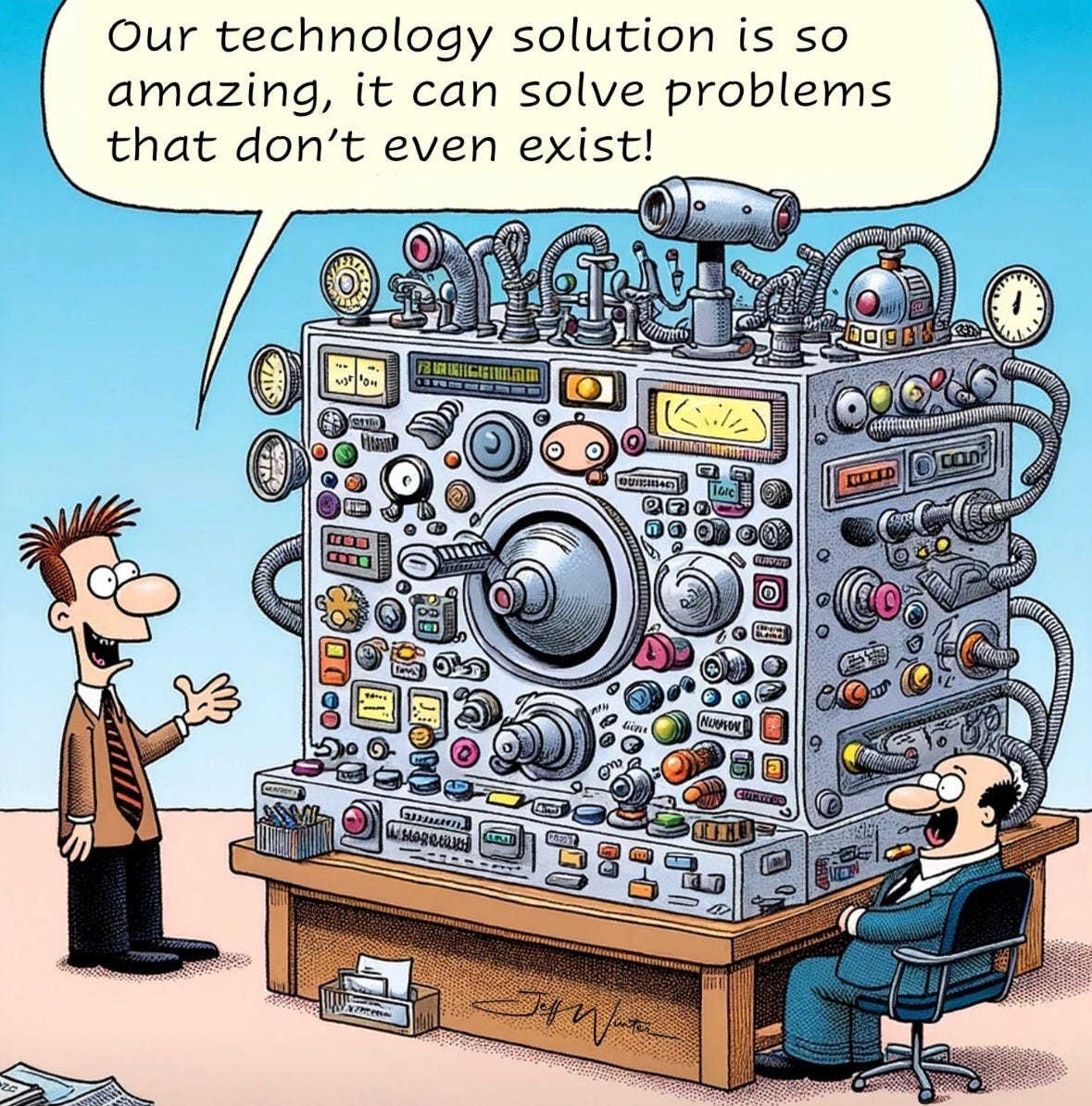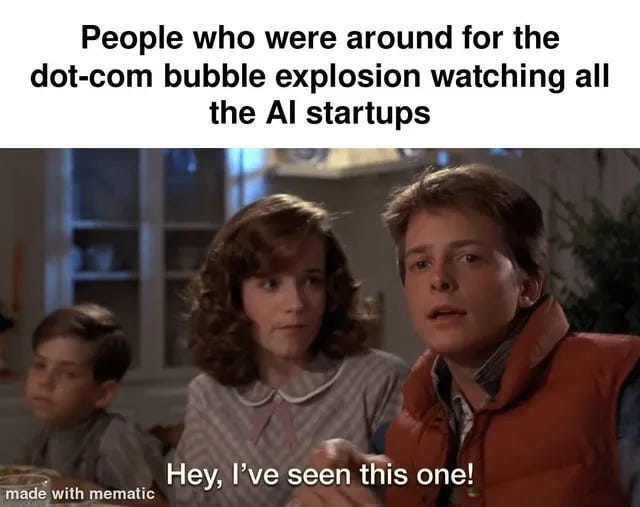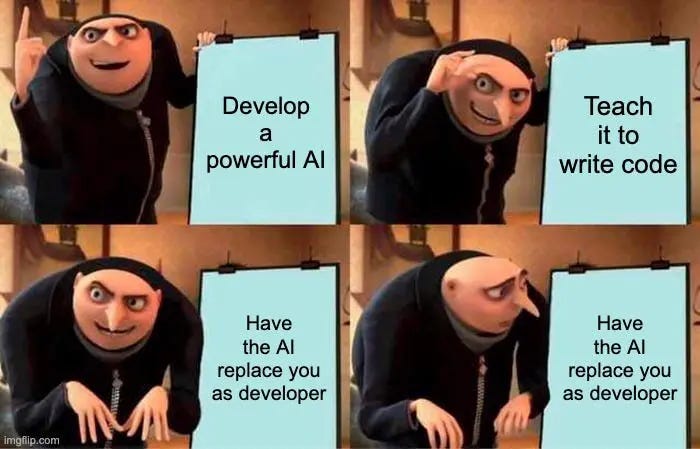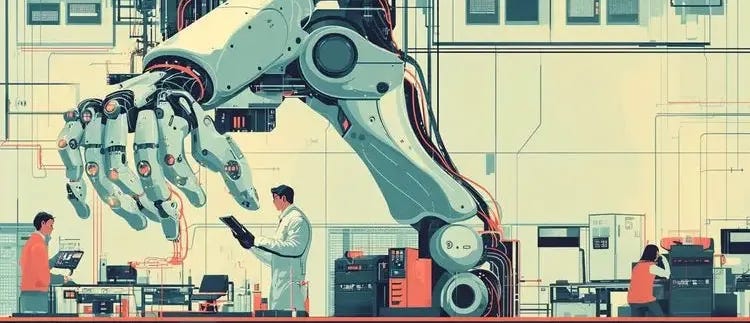C2V December Notes From The Trenches
Welcome friends! A very happy holidays to you and your families, and many thanks to each of you for another year of loyal readership. We can’t tell you how much that means to us.
Another year is in the books, and it was, well… fine. This may sound dismissive, but we promise it isn’t. A year like 2024, that was more or less average in the venture world is actually great, and a welcome change from the rather extreme volatility of the prior of few years. We’re just so used to reflecting on years of huge ups or huge downs, we’re a little rusty on how to properly describe a normal one, where markets are generally trending upwards (but at a reasonable and sustainable pace) and nothing especially crazy has happened. We’ll work on it.
But that’s a problem for future newsletters because (as our long-time readers know) December is prediction time! As always, before we dust off the crystal ball, let’s look back at how we did last year.
2024 Review
On our 11 tech-specific predictions, we’re giving ourselves a score of:
Five right, three wrong, three incomplete (is it cheating to allow annual predictions to roll over to the next year? Probably, but it’s our newsletter, so who’s going to stop us?)
Plus, a half-point for our non-tech bonus prediction.
Let’s take a look at each in order (these are all truncated to save space; you can find the full version here):
1) Generative AI (in three parts):
Part I – The market shifts away from broad LLM foundation models to more domain-specific use cases.
Nailed it. The LLM oligopoly we predicted is rapidly taking shape, and new players are developing niche LLMs (SLMs? MLMs?) or vertical-specific products.
Part II - Horizontal/generalist GenAI products fade away as customers recognize that they are not products so much as features in search of a product (i.e., cool tech that isn’t especially useful).
This is still TBD, but we think it is headed in the expected direction. Based on the deals we’re seeing, we can tell you this is an extremely crowded market, and the vast majority of new, one-size-fits-all GenAI companies are struggling to resonate with potential customers and investors. On the flipside, a handful of these industry-agnostic GenAI companies have recently raised huge amounts of capital, so at the very least, they’re not going anywhere for the next year or two. Time will if they’re actually finding product-market fit as well
.
Part III – AI-as-a-service and proprietary language models layered into existing enterprise software platforms scale rapidly across nearly all industries.
Nailed this one as well. Just in our own portfolio, more than 60% of companies have at least some element of GenAI built into their products, and nearly a third feature proprietary GenAI tools as a core part of their product offering.
2) Legal Tech explodes as law firms recognize GenAI for the threat that it is and embrace new domain-specific language models for everything from research to drafting and editing.
“Explodes” might be a little strong. Still, we’ve seen far more activity in this space in 2024 than in any of the 7 years we’ve been at this (by a magnitude or two), and the product offerings and customer adoption appear only to be accelerating from here.
3) Defense & Security Tech has a moment on the back of two major wars and generally elevated geopolitical tensions.
All-caps NAILED it. This might be the most prescient prediction we’ve ever published. Unfortunately, it’s also quickly becoming the one we most wish we got wrong. We’ve now seen two different defense-tech pitches in the last 3 or 4 months, and our immediate reaction was along the lines of “So this is how humanity will destroy itself. Got it.”

Jokes aside, there is some absolutely terrifying autonomous weaponry in prototype right now, and it seems like they’ve barely scratched the surface. We’re honestly not sure what the takeaway is here, as there’s certainly no putting this horse back in the barn. I guess we hope the inevitable mistakes that will be made are all in relatively low-stakes situations? This isn’t a fun topic; let’s move on.
4) EdTech startups (and other professional training) that provide a viable alternative to the eye-watering costs and increasingly questionable returns of traditional universities get a material boost (both funding and commercial) from the backlash to prominent universities’ responses to hate speech on their campuses.
Dead wrong on this one. It was really more wishful thinking than anything else, and, alas, the university system in the US remains fundamentally broken. Sigh.
5) Meta pulls the plug on Threads due to lack of usage, as Twit-… er, X (it still sounds weird), despite its best efforts to self-combust, continues to be everyone’s short-form media app of choice.
Wrong on this one as well (but it still kind of feels right). Meta seems to be sticking it out, and some of the user and engagement numbers would suggest Threads is at least making some headway (if slowly)… and yet, how many times have you seen, read, or heard someone reference something they saw on Threads?
6) Following Missouri’s landmark antitrust ruling against the National Association of Realtors (for price collusion), PropTech emerges as the primary method of buying and selling homes, as fee competition has brokers scrambling for efficiency/productivity solutions.
Mostly wrong here, as the ruling that was supposed to forever change the way US homes change hands seems to have resulted in a collective shrug, followed by business as usual. At 5.32%, 2024’s average broker commission rate is almost exactly the prior 10-year average, and the for-sale-by-owner share of sales hit an all-time low (6%, down from 21% in 1985).
That said, long-term trends still strongly favor the PropTech market. The share of home buyers who used the internet at some point in their search hit 100% in 2024, and 52% of buyers found the home they eventually purchased online (up from 37% in 2010). TBD on when/if the NAR verdict will have a material impact on commissions, though.
7) At least one high-profile late-stage VC shocks the industry with the announcement that it is shuttering operations after having to realize massive losses on its 2020/2021 vintage fund(s).
Directionally correct, but specifically wrong. In retrospect, we definitely framed this prediction poorly. VC firms don’t announce bad news unless they’re forced to, so while VC firms may begin their lives with fanfare, they tend to die quietly. So, while there were no big announcements, the ranks of so-called zombie funds (firms that are still managing existing portfolios but are no longer making new investments or raising new money) have skyrocketed. According to Pitchbook data, the number of active investors (those still making new investments) in US VC declined a further 25% in 2024, hitting a new decade low.
Obviously, we’ve set a considerably higher bar for ourselves than simply not becoming one of the dead (or, I guess, undead), but apparently, that in and of itself is something of an accomplishment these days. Go us.
8) Pressure on app store fees leads to VC funding for consumer tech, halting its multi-year slide and beginning a multiyear rebound.
According to Pitchbook-NVCA data, B2C deal funding declined 9.1% in 2024, but in a market that declined twice that fast overall, that’s a pretty solid performance. It’s also unclear how much app store fees played a role, but we’re still counting this as a win (the beauty of grading your own predictions).
9) Bonus (non-tech) Prediction: Neither Trump nor Biden is on the ticket in November (due to legal issues and age issues, respectively).
Half credit (and might have been a full win, but for the plodding pace of the US legal system)
On to the moment, you’ve all been waiting 12 long months for…
2025 Predictions
The electrification of everything. Cars, bikes, trucks, and buses are going gangbusters in Asia (50% of all car sales in China are now EVs) as EVs in the US and EMEA slow down. Tariffs will merely postpone the inevitable as EVs will swallow up Latam, MEA, and SEA markets. Big Auto needs to embrace and innovate or risk oblivion (which they almost certainly won’t do until it’s way too late, to which they’ll respond with a woe-is-us PR campaign that ends in a bailout — just trust us here, we’ve seen this movie before).
The money coming into GenAI will mirror the money that went into the dot com economy in the late 90’s. And much like the dot com bust, many AI companies won’t be able to fund the computing costs without massive infusions of cash that might not be there. Meanwhile, the smarter companies will understand that the most impactful application of GenAI is in operational efficiencies that should result in a minimum 4-7% increase in EBITDA margins.
Listenership/viewership is going to shift to podcasts and influencer media at an even faster pace as folks shift away from traditional news outlets that continue to over-index on coverage of disasters (natural and man-made) and partisan bickering that Americans are both exhausted with and intensely distrustful of.
Expect a major reduction in the workforce of engineers and the resulting cost and gross profit improvements as companies leverage GenAI for coding. Automation will increase a meaningful percentage of coding and time-intensive tasks, driving a 20%+ reduction in the required R&D headcount for 2025. With market evaluations of public tech companies now heavily weighted toward profit margins, companies will look to find cost savings anywhere they can and will inevitably realize that they can build the same amount of product with fewer of their most expensive employees
“As the grass grows, it needs to be cut" seems the appropriate metaphor here, capturing the dual nature of GenAI’s rapid expansion: immense opportunity paired with the necessity for vigilant oversight. Growth without management can lead to chaos; the success of AI in 2025 and beyond hinges on balancing innovation with responsibility. But our elected representatives have got this… right? Let’s just move on.
For the first time, Nvidia will see a material decline in market share for AI chips, driven by both cloud companies developing their own chips and upstart competitors offering cheaper alternatives for the large and growing swath of the market that requires less computing power than the foundation layer LLMs who have thus far dominated the demand for AI chips.
The impacts on Nvidia will likely be limited, though, given that even a material decline from their current estimated 70 - 95% market share is still a whole lot of market share, and the staggering growth of the AI chip market overall will likely more than makeup for any lost ground.
The hype around Google’s new quantum computing chip has its 15 minutes, then disappears from the public discourse, not resurfacing for the next 12 months and likely well beyond. This is by no means a criticism; it’s hard to overstate Google’s technological achievement here, nor the long-term significance of this breakthrough (quantum computers being so much faster than today’s fastest supercomputers that they require number-naming conventions no one has ever heard of to describe).
That said, the technology is still fraught with fundamental challenges that will take a while to overcome. For example, it uses novel, highly specialized (and expensive) components. It is also extremely fussy, requiring massive cooling capacity and operating environments so tightly controlled they can prevent even the most microscopic disruptions. Oh, and while it can perform computations at incomprehensible speeds, the results may or may not actually be correct (we might have buried the lead there). In fact, one of Google’s recent key breakthroughs was reducing errors from “all the time” to “a lot of the time.” There’s also the fact that quantum computing has no use cases at the moment (no one, understandably, having spent time writing algorithms that require anywhere near this level of computing power).
This strikes us as analogous to Boston Dynamics’ path in robotics, where their reveal of a robot dog doing backflips in the early 2000s was (at the time) an extremely impressive technological leap that captured the world’s attention, but one that quickly faded as it became clear that this was (again, at the time) a hammer looking for a nail, which it ultimately took them another decade-plus to find (though now they’re moving like a roofer laying shingles).
That’s all to say that we do not doubt that quantum computing will be utterly transformative at some point in the future. It’s just unlikely to be anytime soon.
The revenge of the emerging manager. After several years of a slow drip of write-downs with no end in sight (perhaps even culminating in a couple of completely lost vintages), LPs finally reach their breaking point with the Big Name, Bigger Fund crowd and get back to what made venture an extremely attractive asset class in the first place, which results in a resurgence of funding for appropriately-sized, early-stage offerings from tomorrow’s household names (at the expense of 2005’s household names).
(Hey, just because a prediction is transparently self-serving doesn’t mean it will be wrong. )
Aiding this shift, early-stage companies see raise sizes remain flat or decrease slightly, even while runways grow longer, on the back of rapid deployment of GenAI-driven efficiency tools across the entire enterprise, allowing them to do more with less in everything from sales and marketing to customer success and engineering.
Bonus (non-tech) prediction – the Lions and Bills will meet again in the Super Bowl… and it will somehow end in a tie (we know this isn’t supposed to be possible, but with these two fan bases squaring off with a championship on the line, could it really end any other way?)
Thanks for sticking around! We’ll see you all next year!
Portfolio Highlights
Lease Up New Releases
LeaseUp CEO Kurt Chisholm shared a live webinar introducing the game-changing new Bulk Edit feature. Kurt also previewed the soon-to-launch AI import tool. Together, AI import + bulk editing make it exponentially faster to turn raw data and marketing flyers into a professional client report customized to highlight the most important details for every deal.
Watch the Live Stream.
Civ Robotics and The Future of Work
As we enter 2025, automation is reshaping industries—not by replacing jobs but by transforming them. The rise of robotics creates safer workplaces, empowers workers, and unlocks new opportunities across sectors like construction, manufacturing, logistics, and more. The future of work is about collaboration, not competition, between humans and machines. By embracing automation and prioritizing upskilling, industries can unlock innovation, improve job quality, and scale new heights.
LeadingReach Announces Strategic Partnership with Medmo to Add 15,000+ Imaging Centers to Healthcare’s Largest Connected Referral Network
LeadingReach, healthcare’s largest connected referral network, has partnered with Medmo, a leading medical imaging workflow solution, to enhance value-based care and streamline imaging order processes. This collaboration aims to modernize workflows, improve patient experiences, and close the loop on patient care journeys.
Key Highlights:
Seamless Access: Providers gain instant integration to 15,000+ imaging centers nationwide via LeadingReach workflows.
Real-Time Tracking: Track imaging orders directly in LeadingReach, ensuring better visibility and accountability.
Enhanced Care Coordination: Address common imaging order challenges like patient confusion and provider visibility gaps.
Improved Outcomes: Together, LeadingReach and Medmo deliver efficient, patient-centered solutions that save time and resources.
Never pay retail again; buy tech at a fraction of the cost
Eze Enterprise was featured in Product Hunt. The company offers access to new, used, and refurbished electronics in small to large quantities without the retail price tag. We have over 1 million devices across 1,000 SKUs of IT hardware in 8 product categories.












